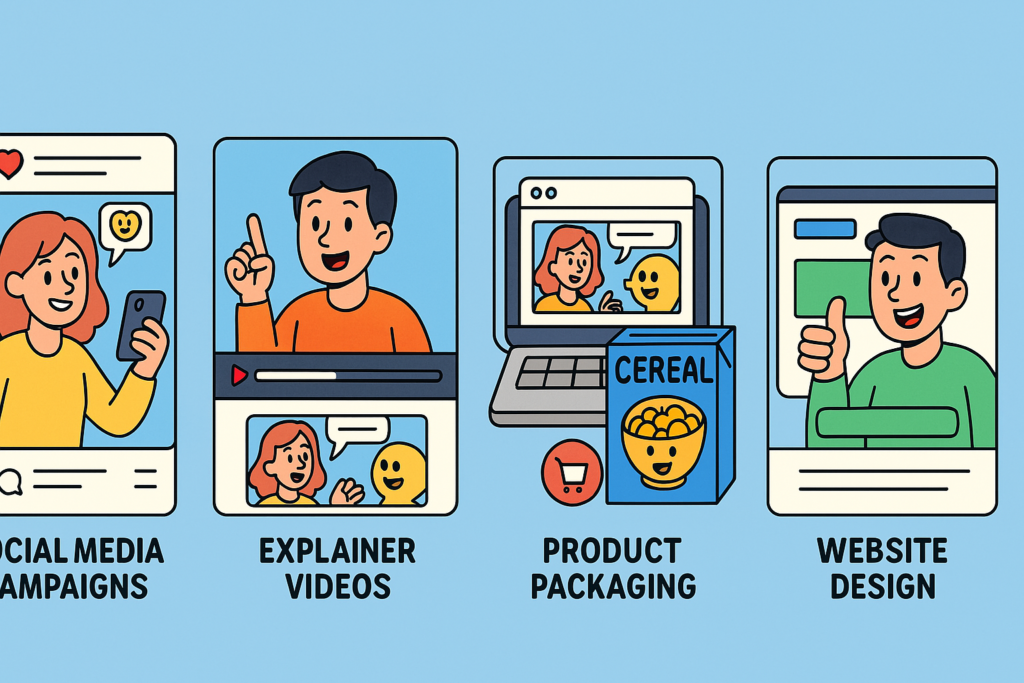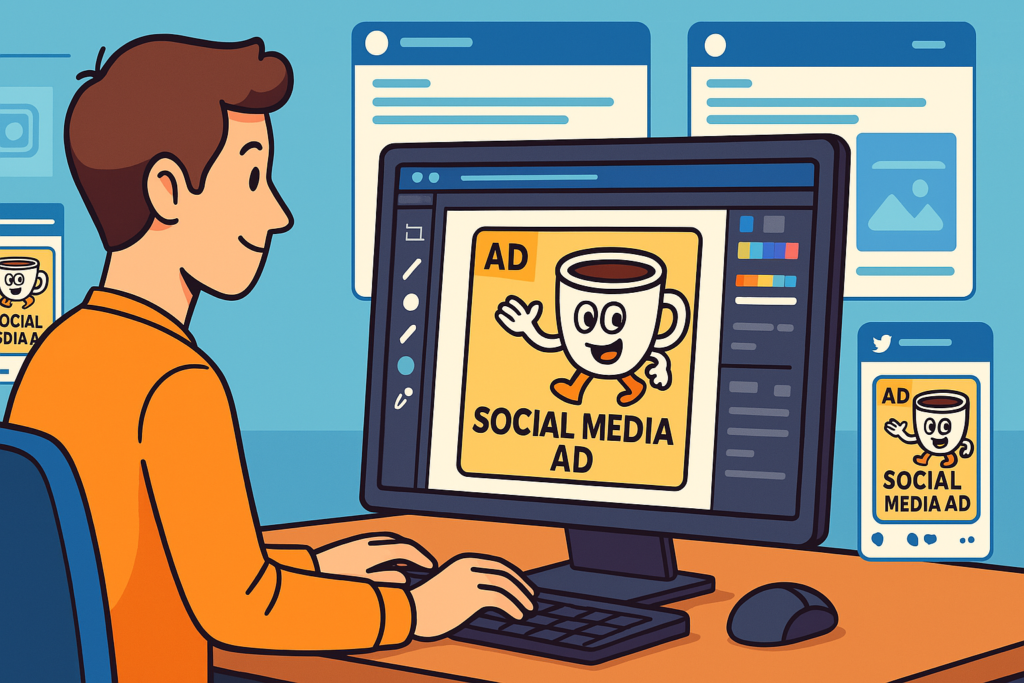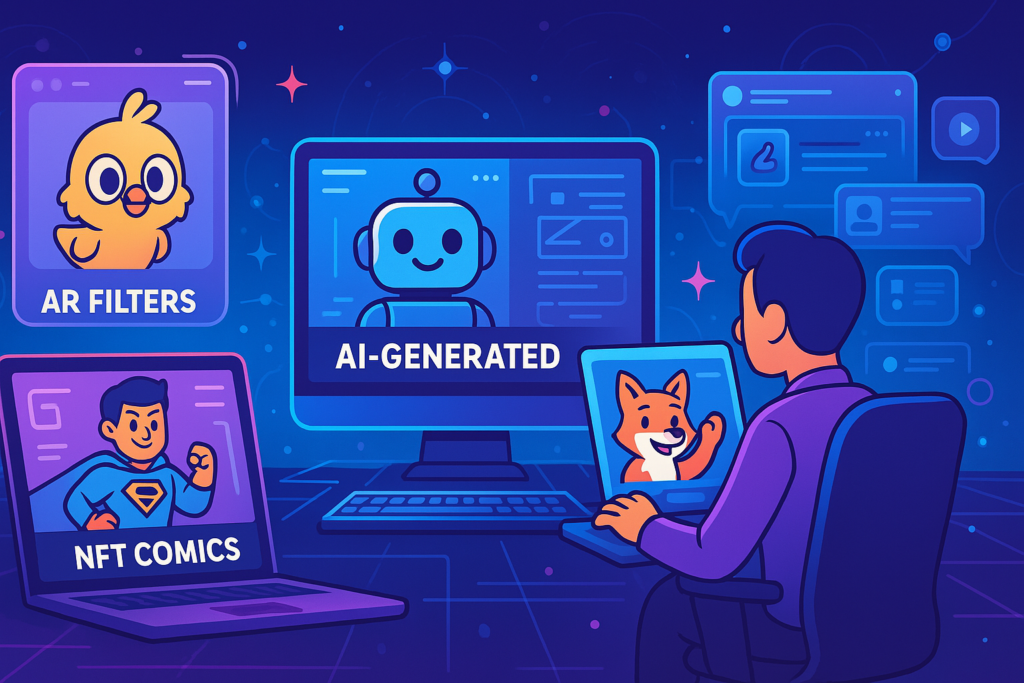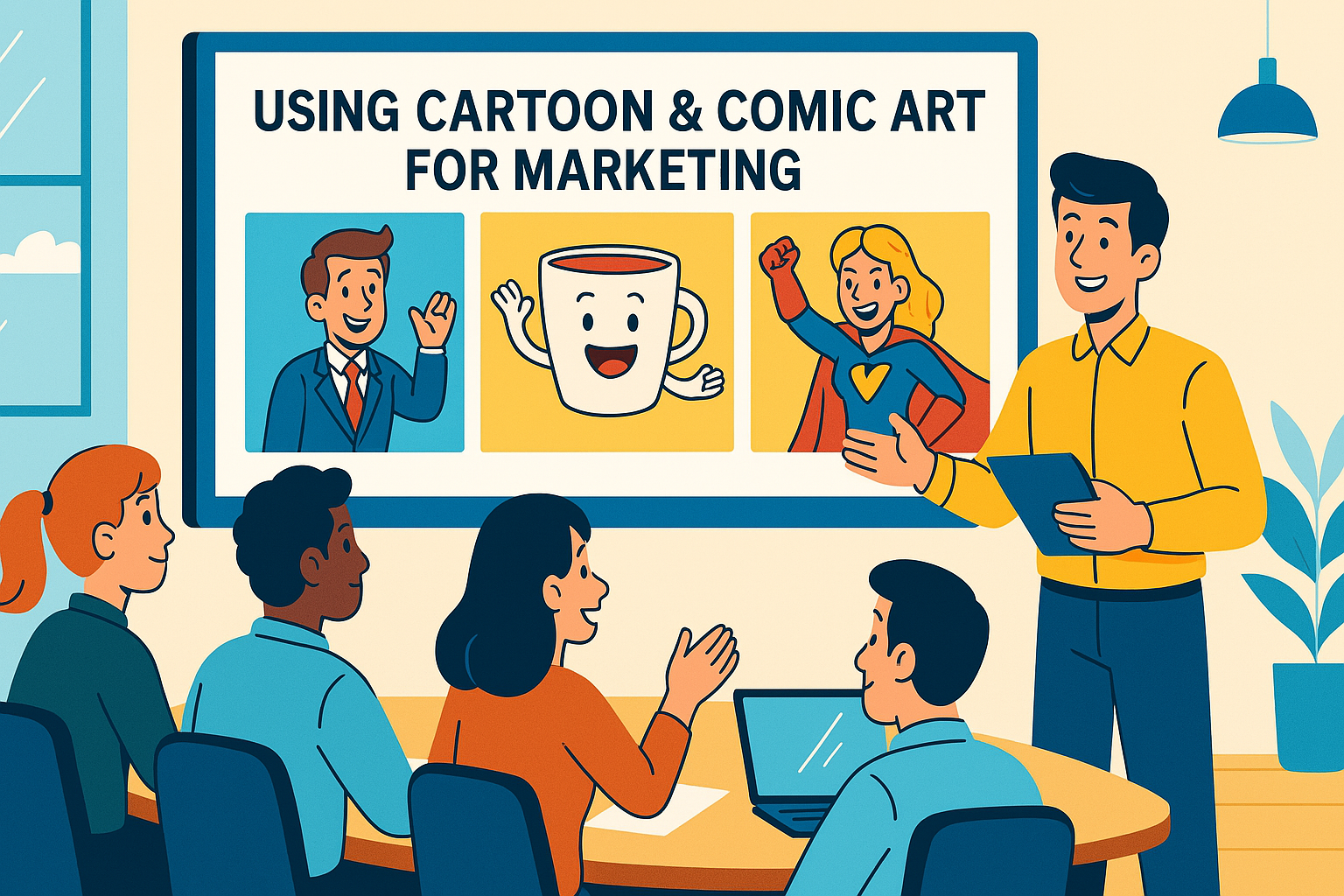A small coffee shop in New York was struggling to attract new customers. They introduced a comic strip series featuring a quirky coffee cup character navigating daily life. Within months, their social media following doubles, and foot traffic increases by 35%. This is the power of cartoon art and comic art in marketing. According to HubSpot, 54% of consumers prefer engaging with brands through visual content, and animated visuals increase conversion rates by 20%. In the US, the animation industry is valued at over $16 billion annually, highlighting the growing influence of cartoons and comics. Another study by Content Marketing Institute reveals that 65% of marketers find visual content essential for their brand strategy. This article explores how businesses in the US are leveraging cartoon art and comic art for marketing success.
How I Discovered Cartoon Art for Marketing
A few years ago, I launched a small digital marketing agency with big dreams but little budget. Competing with larger, established agencies was tough, and I struggled to attract clients. One day, while brainstorming unique ways to stand out, I thought back to my childhood love of cartoons. What if I created a fun, relatable cartoon mascot to represent my brand?
I sketched a cheerful, coffee-loving fox named Finn, who became the face of my social media posts, email campaigns, and even client presentations. Finn wasn’t just a mascot; he told stories, shared marketing tips with humor, and connected with people in a way that plain text never could. Within months, my engagement rates skyrocketed, and client inquiries doubled. Many clients told me they reached out because the cartoon approach made my brand feel approachable and creative. That experience taught me the immense power of cartoon art in marketing, and it has been a key part of my strategy ever since.
5 Ways to Animate Your Marketing Visuals with Cartoon and Comic Art

1. Social Media Campaigns
Use cartoon characters in Instagram stories or Facebook posts to grab attention.
2. Explainer Videos
Animated videos simplify complex products, making them more engaging.
3. Email Marketing
Add comic strips in newsletters to increase open rates.
4. Product Packaging
Incorporate cartoon designs on packaging to make products more appealing.
5. Website Design
Use comic art styles for banners or icons to enhance user experience.
Examples of Cartoon and Comic Art in Marketing
- Mailchimp: Their playful monkey mascot enhances brand recognition.
- Coca-Cola: Uses animated ads to create emotional connections.
- Slack: Incorporates comic-style illustrations for user guides.
What Characters Are Best for Specific Business Marketing?
- Tech Startups: Futuristic robots or quirky tech gadgets.
- Food Brands: Friendly chefs or animated food items.
- Fitness Brands: Energetic athletes or gym equipment.
- E-commerce: Shopping bags with personality.
- Education Platforms: Wise owls or book characters.
5 Benefits of Cartoon Marketing Videos for Business
- Increased Engagement: Cartoons are visually appealing and memorable.
- Simplified Messaging: Complex ideas become easy to understand.
- Emotional Connection: Humor and storytelling build stronger relationships.
- Higher Conversion Rates: Animated content drives more clicks and sales.
- Cost-Effective: Cartoon videos are often cheaper than live-action.
How Cartoon Art Enhances Brand Storytelling
Cartoon art is a powerful tool for storytelling because it simplifies complex ideas, evokes emotions, and creates memorable characters that audiences connect with. Stories told through cartoons can transcend language barriers, making them ideal for brands with diverse audiences.
A great example is Mailchimp, an email marketing platform. Mailchimp’s quirky cartoon mascot, Freddie, not only adds a fun, playful element to the brand but also guides users through complex marketing tools with ease. The brand’s storytelling often includes short animated videos featuring Freddie solving common marketing problems, making the platform more approachable and user-friendly. This use of cartoon art has helped Mailchimp build a relatable and memorable brand, turning mundane email marketing into an enjoyable experience for users.
Cartoon storytelling allows brands to create consistent narratives across platforms, from social media and websites to advertisements and packaging. It humanizes brands, making them more than just logos or products, and fosters deeper connections with audiences.
The Role of Humor in Cartoon-Based Marketing
1. Captures Attention Quickly
Humorous cartoons stand out in crowded feeds, grabbing the audience’s attention within seconds.
2. Makes Content Memorable
People are more likely to remember and recall funny content, enhancing brand recognition.
3. Boosts Engagement
Funny cartoons encourage likes, shares, and comments, leading to higher social media engagement rates.
4. Humanizes the Brand
Humor makes brands feel approachable and relatable, building trust with the audience.
5. Encourages Virality
Humorous cartoon content is often shared more frequently, increasing reach and potential virality.
6. Eases Complex Messaging
Humor helps simplify complex ideas, making them easier to understand through lighthearted cartoon art.
7. Appeals to All Ages
A well-crafted humorous cartoon can resonate with a broad audience, from children to adults.
8. Creates Positive Associations
People associate the joy from humorous content with the brand, fostering loyalty and positive sentiment.
Using Cartoon Art for Social Media Ads: A Step-by-Step Guide

1. Define Your Campaign Goal
Decide what you want to achieve: brand awareness, lead generation, sales, or engagement.
2. Identify Your Target Audience
Research your audience’s age, interests, and social media habits to tailor your cartoon style and messaging.
3. Create a Relatable Cartoon Character
Design a character that represents your brand’s personality. For example, Duolingo’s owl makes language learning fun and approachable.
4. Craft an Engaging Story or Message
Use short, funny, or inspiring cartoon clips to convey your message quickly. Keep it under 15-30 seconds for platforms like Instagram Reels and Facebook Stories.
5. Add a Clear Call-to-Action (CTA)
Include prompts like “Shop Now,” “Learn More,” or “Sign Up Today” to drive user action.
6. Use Animation Tools
Platforms like Toon Boom or Vyond help create professional cartoon animations even without advanced skills.
7. Optimize for Each Platform
Ensure your ad fits the dimensions and format of each social media platform (e.g., 1080×1080 for Instagram posts).
8. Test and Analyze Performance
Run A/B tests with different cartoon styles or messages and track metrics like views, clicks, and conversions to refine your approach.
Cartoon Art vs. Comic Art: Which Is Better for Your Business?

1. Cartoon Art
Best for short, fun, and engaging content like social media ads, mascots, and quick animations. It’s simple, colorful, and appeals to a wide audience, making your brand feel friendly and approachable.
2. Comic Art:
Ideal for storytelling through sequential panels, perfect for campaigns that need deeper narratives or step-by-step explanations. It adds depth and personality, often used in email newsletters, blogs, or long-form content.
Which to Choose?
- Use cartoon art for quick, eye-catching marketing and broader appeal.
- Choose comic art for detailed storytelling and brand narratives.
Future Trends: The Growing Impact of Cartoon and Comic Art in Marketing
1. Interactive Cartoons
Brands will use interactive cartoon ads where users can click, swipe, or choose story paths, enhancing engagement.
2. AI-Generated Cartoon Content
AI tools will help create personalized cartoon and comic visuals quickly, tailored to individual user preferences.
3. Augmented Reality (AR) Cartoons
AR filters and experiences featuring cartoon characters will become popular on platforms like Instagram and Snapchat.
4. NFT-Based Cartoon Collectibles
Brands may launch NFT cartoons and comics as digital collectibles, fostering customer loyalty.
5. Cartoon Explainer Videos
Short animated explainers will continue to dominate, especially for tech, finance, and e-commerce brands.
Final Thoughts: Why Cartoon and Comic Art Are the Future of Marketing
Cartoon art and comic art have become essential tools in modern marketing. With proven benefits like increased engagement, emotional connection, and cost-effectiveness, businesses in the US are leveraging these creative visuals for remarkable success. As the demand for visual content continues to rise, integrating cartoons and comics into marketing strategies offers a competitive edge. Whether you’re a small startup or a large corporation, the playful charm of cartoon art can transform your marketing efforts and drive impressive results.



